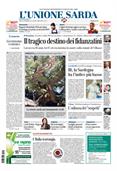Three hospitals closed, no screening, increasingly elderly patients: "Here are the reasons for the endless waits in the emergency room."
The extraordinary commissioner of the Cagliari University Hospital, Vincenzo Serra: "Critical timelines certified by Agenas, but it's not the fault of the department or its staff. There's a shortage of beds; the alternative would be to close due to overbooking."Per restare aggiornato entra nel nostro canale Whatsapp
One in five patients waits more than eight hours. This is the case at the Duilio Casula Polyclinic, according to the latest Agenas report on the performance of Italian hospitals. Along with encouraging data on the quality of care at the Monserrato hospital, the report highlights very poor average emergency room stays.
But what are the causes? Vincenzo Serra, the extraordinary commissioner of the AOU, is trying to go beyond the data and analyze the facts and context.
He begins with a clarification: "The statistics from Agenas," the national agency for regional health services, "refer to 2024," therefore to a period prior to his arrival at the top of the health authority.
But that's not the point: "The indicator expresses a very negative value, but it shouldn't be linked to an organizational or care incompetence in the emergency room. This is absolutely unacceptable, as I consider the Monserrato emergency room to be a prime example of Sardinian healthcare."
The healthcare system in southern Sardinia, according to the Special Commissioner, "is often the subject of public scrutiny and touches on issues common throughout Italy, including: growing healthcare needs due to the aging population, community-based healthcare that is not always able to prevent uncontrolled access to the emergency room, the closure of several city hospitals over the years (San Giovanni 10 years ago, Marino and Binaghi 4 years ago), temporary department closures in peripheral hospitals due to staff shortages, and very long waiting times for outpatient visits. This also includes hospital patients who, despite having completed the acute phase, are unable to access various forms of post-acute care (post-acute rehabilitation, ADI, RSA, etc.)."
The result is that everyone ends up in the emergency room, because there are no alternatives, "and this inevitably leads to a saturation of available hospital beds."
The Policlinico's bed occupancy rate, Serra continues, "frequently peaks at 130-140%. This situation, long known to all, presents the hospital with two options. Either temporarily close the emergency room to deal with overbooking, risking an inevitable domino effect on the other, few, city hospitals still open. Or continue to admit patients in need of assistance, including using the stretchers available in the emergency room and, at great expense to staff, ensuring patient access through consultations with department specialists."
This second hypothesis reached peaks of 20-25 patients staying in the emergency room for up to 5-6 days. All of this "generates exponential growth in the indicator of emergency room stay times . Attributing this to organizational or care deficiencies evokes the paradox of being identified with the very "evil" we are trying to combat."
(Unioneonline)
